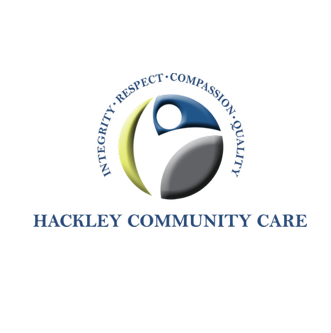By Debra Stafford
Founder/CEO of ROAR: Reclaiming Ourselves After Recovery (from cancer)
Breast cancer treatment takes a heavy toll on our bodies and our psyches. It is easy to fall into the trap of feeling like you will never again be able to live the active, athletic “normal” life you lived before your diagnosis. Recovery in our new normal does not happen in a straight line, it is a winding journey with many ups and downs, good days and bad days. On a bad day, it can be hard to remember that every downswing is followed by an upswing.
As a 5-year breast cancer survivor, I have found a number of powerful tools that have helped me successfully navigate my new normal. These tools include: regular mindfulness and self-care practices, a commitment to show up as I am and keep moving forward, having a supportive community and a safe space in which to recover. ROAR: Reclaiming Ourselves After Recovery (from cancer) and Standup for the Cure are partnering to bring these tools to you.
The following is a guide for filling your toolbox with the tools that can help you successfully navigate your new normal. Everything I am sharing is based on my own cancer journey: what helped me to feel strong find joy again – the tools I used to build a life I love.
Be Gentle & Patient with Yourself
Cancer diagnosis and treatment sometimes leaves survivors/metavivors with Post-Traumatic Stress and can include a large amount of grieving. We have to grieve the loss of our feeling of safety in the world. We grieve the loss of the life, and the identity we had before diagnosis. Many of us are left with the feeling that the body that was once a source of so many good things has now betrayed us. Every ache or pain can trigger fear that the cancer might be back. Regular scans trigger anxiety that we might once again hear the words, ”You have cancer”. It is important to be gentle and patient with yourself. Give yourself the space to grieve and feel and heal. Congregating with others who have been through what you’ve been through can provide you with a safe space and community that welcomes you as you are and reminds you to be gentle and patient with yourself. This community can provide a safe nest where you can heal physically and spiritually.
Mindfulness: Live in the Now
Evidence has shown that a regular mindfulness practice is one of the most powerful tools for managing the often overwhelming feelings of anxiety and grief that follow a cancer diagnosis. Mindfulness trains your mind to focus on the now, rather than getting lost in nostalgia for the past or worry about the future.
Find a mindfulness practice that brings you joy! Examples include:
• Guided Meditation
• Yoga
• Mindful Walking
• Prompt Journaling
• Prompt Painting
• Contemplative Prayer
Focus on what you are able to do TODAY, and DO IT! If you challenge yourself to do what you can today, and celebrate every forward step, you will progress faster than you believe possible. I remember the first time I walked 3 houses up to the park near my house 4 weeks after surgery. I did a happy dance inside my head. (I still didn’t have the energy to do a real happy dance). It was hard to feel so weak because my identity before cancer had been so tied into being active and athletic: I was a Pilates instructor, rower, and hiker. Five weeks after surgery, I returned to teaching mat Pilates (doing the exercises with my students), and we grew stronger together. I wouldn’t have been able to do any of that without being gentle and patient with myself, having a regular mindfulness practice, and having a supportive community to lift me up.
Building Your ʻOhana/Support Network
ʻOhana is a Hawaiian term meaning family (in an extended sense of the term, including blood-related, adoptive, or intentional). The term is a cognate with the Māori [word,] kōhanga, meaning nest. The root word ohā refers to the root of the taro plant, known as the…“staff of life” in Hawaii.
En.m.wikipedia.org/wiki/Ohaha
I recall my first experience with ʻohana at physical therapy. I had to start with cat/cow against the wall because my upper body was too weak to do cat/cow on all fours. It was humbling, but I knew that if I did what I could do each day, I would continue to progress towards my goals. Within 5 weeks, I was doing planks on an unstable surface. The physical therapy aides were cheering me on, reminding me that they could not do some of the exercises I did, and they had never had cancer or surgery. Having a team of people supporting and encouraging me, noticing my progress and reminding me of how far I had come gave me hope and determination during my rehabilitation. Community is vital to a successful healing journey. Seek community to join as you engage in healing through movement and mindfulness practices. Find your ʻohana… find that community that makes you feel like family…that makes you feel safe and understood. Some ways to find for your ʻohana include:
Attending physical therapy where you will have a team cheering you on!
Joining an exercise class for cancer survivors and/or one that creates a sense of community and team support!
Walking with a friend in a place of healing and beauty!
It is important to have people cheering you on towards your goals!
Find Your ʻOhana that Supports You as You Show Up As You Are and KEEP MOVING Forward
If you can’t fly, then run.
If you can’t run, then walk.
If you can’t walk, then crawl,
but by all means, keep moving.
- Martin Luther King Jr.
The first year I participated in Standup for the Cure, I SatUp for the Cure. The chemo-induced neuropathy in my feet affected my balance so that I was unable to SUP as I had done so easily before breast cancer treatment. My friends showed up with me, and folks I had never met cheered me on from the bridge, even though I couldn’t yet stand on my paddleboard. What matters is that you show up and do what you can! Come with a kayak or SitUp paddleboard! Or, start out with yoga on dry land. What matters is that you ShowUp for the Cure and keep moving forward.
Remember: Be gentle and patient with yourself…
My advice to you is:
Join a community/ ʻohana that gives you support and a feeling of safety!
Find mindfulness self-care practice that brings you joy!
Get physical with others who cheer you on!
Show Up as You are & KEEP MOVING FORWARD!
Before you know it, you will be doing things you never believed possible, perhaps even things you couldn’t do before your diagnosis!



